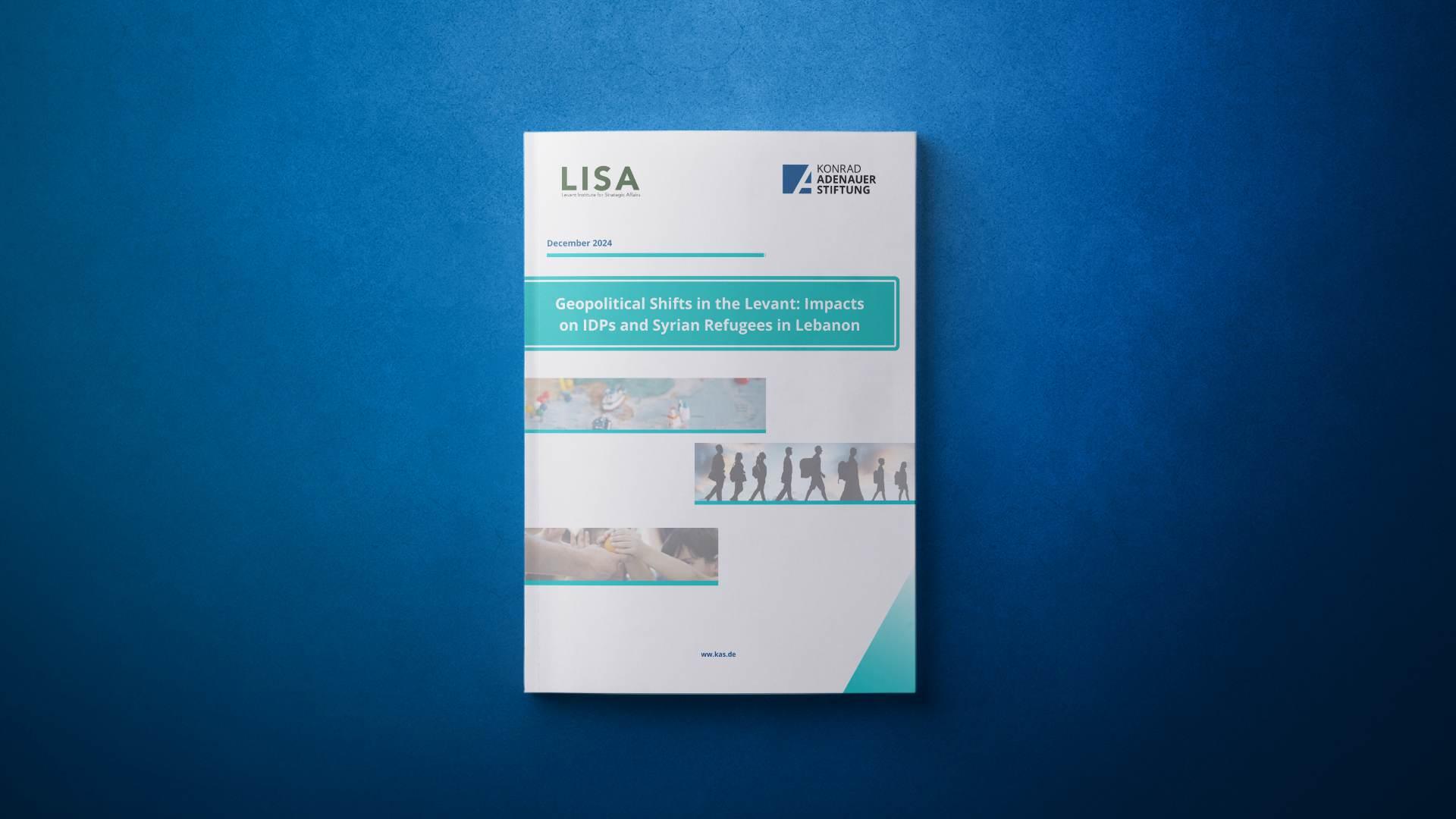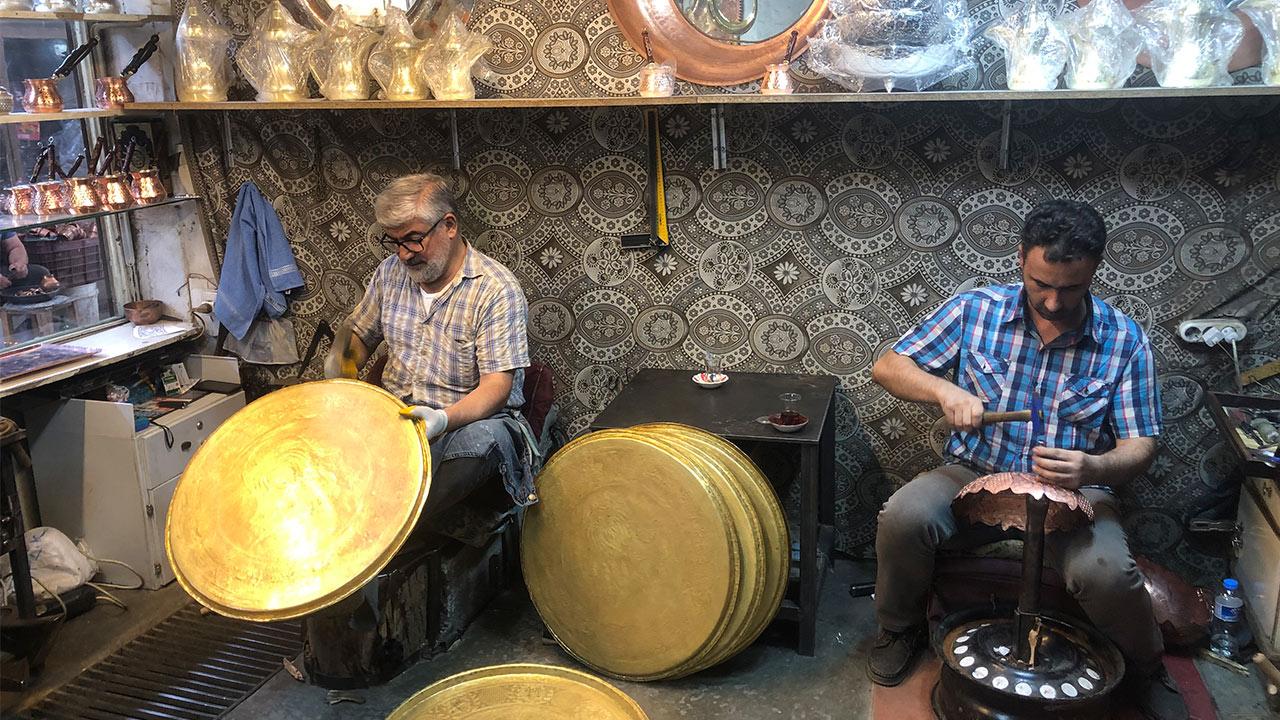The Syrian civil war, now in its thirteenth year, has sparked one of the largest refugee crises in modern history. By 2023, over half of the Syrian population has been displaced. Approximately half of these individuals (7.2 million) remain within Syria as "Internally Displaced Persons" (IDPs). Three-quarters of the Syrian displaced abroad (6.4 million) have sought refuge in neighboring countries.[1]
Syria
Syria remains politically and territorially divided. While Bashar al-Assad has regained control of roughly two-thirds of the country, he has been unable to exert full authority; neither does a functioning state or legal system exist in the other regions that are controlled by various de facto authorities. Although the intensity of fighting has decreased compared to the peak of the civil war, clashes continue along the frontlines between the different factions, and the resurgence of ISIS constitutes a considerable threat.
The economic situation is dire, with 16.7 million Syrians relying on humanitarian aid. For IDPs, the situation is especially critical, particularly in Idlib, where over half of the IDPs (1.9 million) live in precarious humanitarian conditions. The devastating earthquakes of 2023 only exacerbated the crisis. The return of IDPs and refugees to their homes is hindered by widespread destruction, demographic changes, political persecution, and a lack of security guarantees. To date, the Syrian regime has shown little willingness to facilitate the return of refugees, both from within and outside the country.
Lebanon
Lebanon, with a population of around 4.5 million, hosts approximately 1.5 million Syrian refugees, making it the country with the highest number of refugees per capita worldwide.[2] This situation would challenge any society, but Lebanon has faced even greater difficulties due to the lack of a government strategy for managing the refugee influx since the start of the Syrian conflict. This is partly due to Hezbollah's intervention in the war on Assad's side, which has also contributed to the refugee crisis.The situation has had devastating consequences for Lebanon, which is already grappling with deep economic, political, and social problems. By 2024, nearly half of Lebanon’s population lives below the poverty line, while nine out of ten Syrians rely on humanitarian aid.[3] The socio-economic crisis has heightened hostilities between Lebanese and Syrian communities, whose relations were already fraught by historic tensions. Syria was a major actor in Lebanon's civil war (1975–1990) and occupied Lebanon until 2005. The rhetoric of certain Lebanese politicians who scapegoat Syrians for Lebanon's current crisis thus resonates widely. Furthermore, since the economic collapse, impoverished Lebanese increasingly compete with Syrian refugees for low-wage jobs in sectors that were traditionally fully dependent on cheap Syrian labour. This tension often results in violent attacks against Syrians. Despite worsening conditions and calls by the Lebanese authorities for a voluntary return of Syrians, few refugees decide to leave, citing security concerns and lack of livelihood opportunities in Syria as the main obstacles.
Jordan
Jordan hosts around 650.000 officially registered Syrian refugees, making it the country with the second-highest number of refugees per capita worldwide.[4] Around 80 percent of these refugees live in urban areas.[5] Yet, Jordan also houses the world’s largest Syrian refugee camp, Zaatari, which has evolved into a permanent settlement over the years. Since the outbreak of the Syrian war, the Jordanian government has closely worked with international organizations to provide refugees with access to education, healthcare, and humanitarian aid.
However, Jordan faces significant economic challenges, with high unemployment rates affecting both refugees and local Jordanians alike. The government insists that the country has reached its limit and calls for more international support to alleviate the pressure on host communities. In 2023, Jordan tried to advance normalization efforts with Damascus to facilitate the return of refugees. However, due to the Assad regime's unwillingness to compromise, these attempts have thus far been unsuccessful.
Türkiye
Since the start of the Syrian war, around 3.3 million Syrians have sought refuge in Türkiye, making it the country hosting the largest number of refugees globally.[6] Initially, President Erdogan's government kept the borders open and granted Syrians a temporary protection status, allowing them access to essential services such as healthcare, education, and limited employment opportunities.
Despite many successful integration stories, the challenges for both Syrian refugees and the Turkish host community has grown in recent years. Türkiye’s economic crisis, which began in 2018 and worsened in 2021, combined with an increased politization of the refugee issue, has led to rising social unrest and even violent attacks on refugees. In recent elections, all major political parties called for stricter refugee policies. A particularly contentious issue is the potential rapprochement between Ankara and Damascus, which could have significant implications for northern Syria, where Türkiye wields substantial influence through its military presence and infrastructure projects.
It is the responsibility of the international community to contribute to the continued efforts of addressing the needs of refugee and host communities alike, while working together to find lasting solutions for the underlying causes of displacement.
[1] UNHCR, “Global Trends Forced Displacement in 2023”, June 2024.
[2] UNHCR, “Country Operations Lebanon”, 2024.
[3] UNHCR, “Lebanon – Needs at a Glance”, 2024.
[4] UNHCR, “Global Trends Forced Displacement in 2023”, June 2024.
[5] UNHCR, “Jordan”.
[6] UNHCR, “Türkiye Fact Sheet”, September 2023.
Geopolitical Shifts in the Levant: Impacts on IDPs and Syrian Refugees in Lebanon
How has the recent war between Israel and Hezbollah reshaped Lebanon’s displacement crisis? This paper explores the conflict’s impact on internal displacement, the strained public services, and the uncertain return of Syrian refugees.
Check out the full report here.
Special Report: Refugees
A Special Report published by Executive Magazine in collaboration with the Konrad-Adenauer-Stiftung’s Lebanon Office.
Check out the full report here.
When Return is not an Option
Today, more than 80 percent of Syrians who have fled abroad reside in countries directly neighboring Syria, namely Turkey, Lebanon and Jordan. At the beginning of the civil war, these states have kept their borders open for those fleeing the increasing violence in Syria. However, the host countries’ steadfastness started to waver as the war dragged on and hopes for a safe return of refugees turned increasingly grim. Especially in recent years, the situation of Syrian refugees has deteriorated enormously due to economic recession, political incitement and global crises. Despite this, the large majority of those who fled see no hope of returning to Syria, where the economic and security situation is ever more disastrous while the Assad regime continues to hold on to power.
This article is part of a 46-pages Syria dossier of the Konrad Adenauer Foundation in the Middle East magazine zenith. The 2023 winter issue sheds light on current developments in and around Syria. Although from afar, the conflict appears to be frozen and Assad's position in power stable, a closer look reveals that the country and its inhabitants continue to face profound hardships. This dossier goes beyond a superficial analysis and takes an in-depth look at the complex dynamics that significantly influence the situation in and around Syria.
This article is only available in German. Please refer to the German page for access.
The New Syrian Diaspora: From Basic Survival Struggles to Aspirations of Success and Integration
Against the backdrop of four different country-specific contexts, this report examines the asylum and integration experiences of Syrian refugees in Lebanon, Turkey, Germany and the U.S., shedding light on their challenges as well as societal and economic contributions.
Check out the full report here.
Beirut '22
Beirut'22 Documentary
YouTube, KASLebanon
4/8 Beirut Film
4/8 Beirut Film
On August 4, 2020 a large amount of unstable stored ammonium nitrate exploded in the port of Lebanon’s capital Beirut. It is considered as one of the most powerful non-nuclear explosions in history. More than 200 people were killed, 6,500 injured and 300,000 were left homeless. Among them many refugees residing in Beirut.









